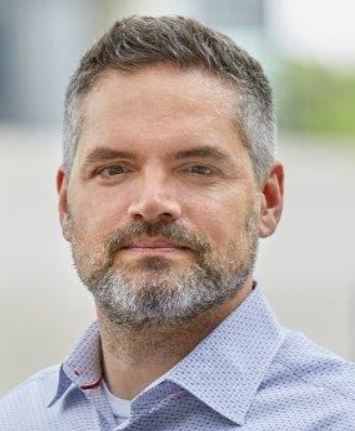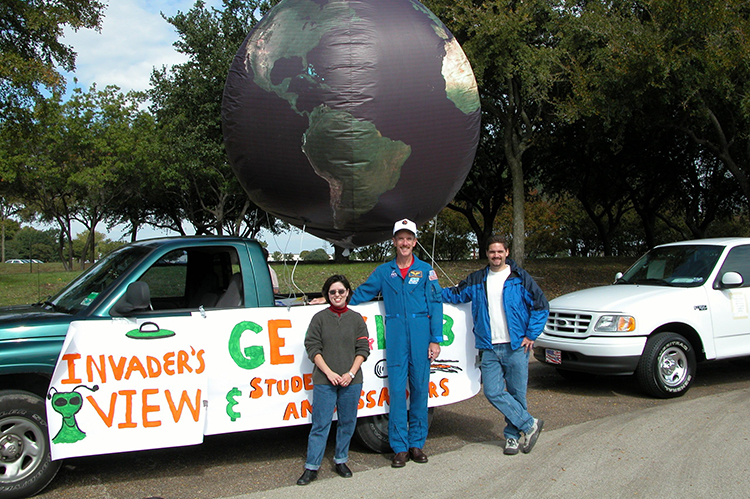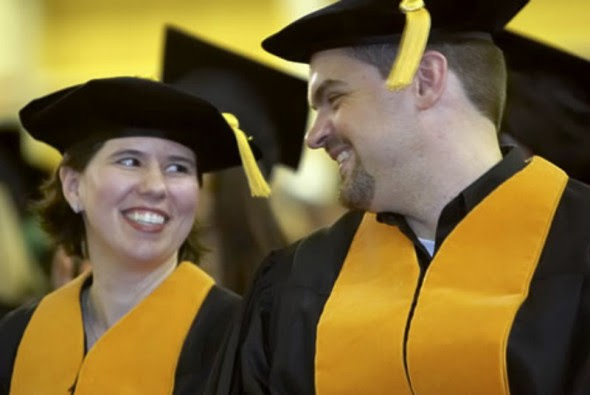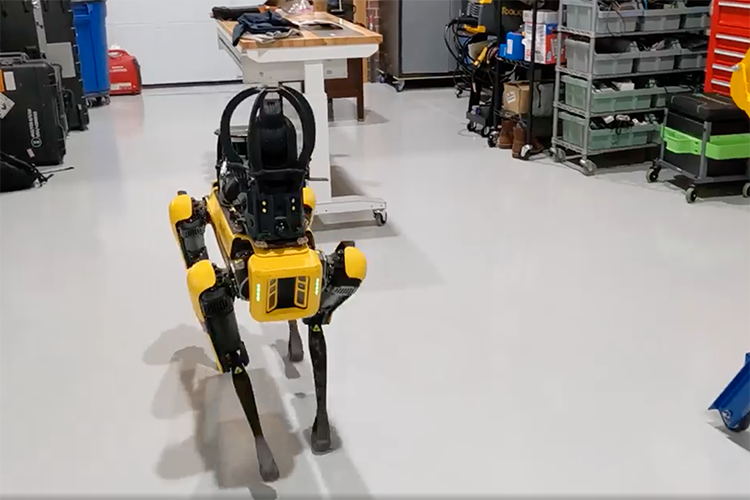
After a childhood often spent looking at the past, UT Dallas alumnus John Thurmond, BA’97, PhD’06, now spends much of his time gazing into the future.
Thurmond is a geoscientist serving as an advisor on emerging technology in geosciences at Hess Corporation, an independent energy company in Houston.
“I am effectively a technology scout,” Thurmond said.
“I keep an eye on the technology landscape, both within oil and gas and outside of it to find new technologies that are a good fit for our business needs. I set up pilots and encourage our organization to step out into the unknown and try new things that we think will add value to what we are doing.”
As an example, the company is interested in building autonomous oil fields “so our group works with robotics and drones as enabling technologies,” Thurmond said.
His route to UT Dallas and to studying geosciences might be considered convoluted.
“What originally attracted me to UTD was the Super Conducting SuperCollider project. It was an exciting thing to potentially be involved with in the early ‘90s. UTD was involved and planning to have a presence in that project. My intention was to become a physics major, and I thought UTD was the place to be connected to that particular bit of infrastructure that was under construction but ultimately didn’t get built,” Thurmond said.
Congress began appropriating billions of dollars to build the collider in 1988 near Waxahachie – 30 miles south of UT Dallas – and had spent $2 billion on its early construction. But Congress rejected further funding in October 1993.

“I ended up starting as a chemistry major, but then, as many students do, I went through a crisis of ‘what do I really want to do with my life?’ And I sought help from advisors at UT Dallas.
“There was some career counseling offered. I was a little bit cynical going in, but it really was very helpful. I ended up taking some personality tests, where they asked about my likes and dislikes to see how they match up with the likes and dislikes of different people working in different disciplines. I matched highly with college professor, geographer and various careers within the natural sciences and also the arts.
“That prompted me to start getting involved with the geosciences department, and I changed my major to geosciences in 1994. I soon realized I didn’t want to spend the rest of my life in a lab or working with chemicals. That didn’t really light my fire,” he said.
Thurmond said his father was a professor of paleontology – the branch of science studying fossilized animals, plants and traces of any once-living thing from a past geological age, which likely helped him develop an understanding of geology.
“I’d been going on field trips since the time I could walk. I knew very much what I was getting into but like many stubborn teenagers, the very last thing I wanted to do when I set off on my own course was repeat what either of my parents did, right? That wasn’t interesting at all. But I still ended up in the geosciences, which ended up being a great choice for me,” he said.
Thurmond noted that his use of computers in the ‘90s turned heads.
“When we did our field methods class, we were drawing maps by hand – very old school. And I was always the person who is doing his assignments on the computer, as opposed to hand drafting. My fellow students thought it was odd, and I was even marked down from time to time for doing it on a computer.
“I was one of the first people to print a poster presentation on a plotter, which is what everyone does now. But back in those days, most posters were still made on matted individual sheets, and you’d go up and stick up all your individual sheets that you had printed out into a nice display. I had access to a plotter though my job at ARCO (Atlantic Richfield Company), which at the time had a big technology center north of campus on Plano Parkway, and I spent the entire night before the poster presentation trying to clear PostScript errors to get these big images printed out. That was always me, at the front of technology, breaking things and trying to push things forward,” Thurmond said.

He also made another seismic discovery in geology. Thurmond met his wife Allie.
“Allie and I ended up being in the same student group in geosciences, moving through the program the same year. We met in sedimentology class my junior year.”
Before receiving their doctorates in geoscience, the couple landed jobs in Norway.
“Allie, she’s a superhero,” Thurmond said. “She was finishing her PhD with a toddler at home and pregnant with our daughter. All while living in a country we were not familiar with. However, the job ended up being a great choice, and allowed me to be at the boundary of geology and computing, which I enjoyed, and allowed me to pursue my interests,” he said. He continued working for the Norwegian company for sixteen years before joining Hess during the pandemic in 2020.
Allie Thurmond, BS’97 MS’01 PhD’06, holds three degrees from UT Dallas.
The couple lived in Bergen, Norway, one of the rainiest cities in Europe.
“The weather does have a way of grinding you down a bit. So, Houston, for all its challenges – being flat and sprawling and hot – at least it’s sunny here a lot,” Thurmond said.
Thurmond currently finds himself surrounded by other UTD alumni in Houston.
“We have something called ‘Front-yard Fridays,’ when everyone in the neighborhood gathers in someone’s driveway for cold drinks, snacks, games and activities, and that’s how I discovered that our next-door neighbors both have degrees from UTD. Between the two houses, we have seven degrees from UTD, and the son of the neighbor across the street is also attending UTD. It’s a small corner of Houston here, but there’s a lot of UTD representation,” he said.

Thurmond has a unique perspective on the growth of UT Dallas campus. He was one of the first students to live on campus.
As a freshman in 1993, Thurmond was awarded a full scholarship through the University’s National Merit Scholarship Program, which not only covered the cost of tuition and books, but also included a stipend and an on-campus apartment. At the time, only the Waterview Apartments, Phases One and Two, existed.
“They were about to break ground on Phase Three my freshman year. UTD really was a commuter school at the time,” Thurmond added.
“There was the Founders Building and Berkner Hall, and when you exited Berkner there were open fields on both sides,” Thurmond said.
Today the campus features some 30-plus buildings, not to mention its six residence halls.
“The growth of campus has been stunning,” he said. “Allie and I have two kids, a son, Jack, who is a junior in high school, and Mia, who is a sophomore. We’re currently doing college campus tours with both kids to help them pick where they want to go, and UTD will certainly be on the list!”
Help us leave the planet a better place for future generations. Your support for the School of Natural Sciences and Mathematics funds scientific discoveries with real-world applications, student and faculty recruitment, and academic scholarships.